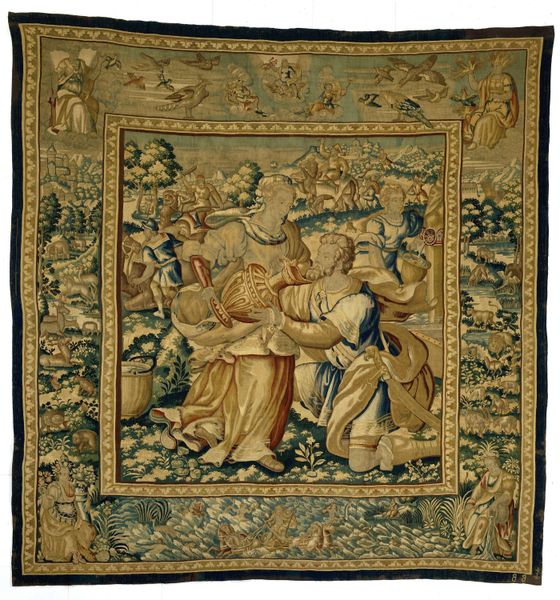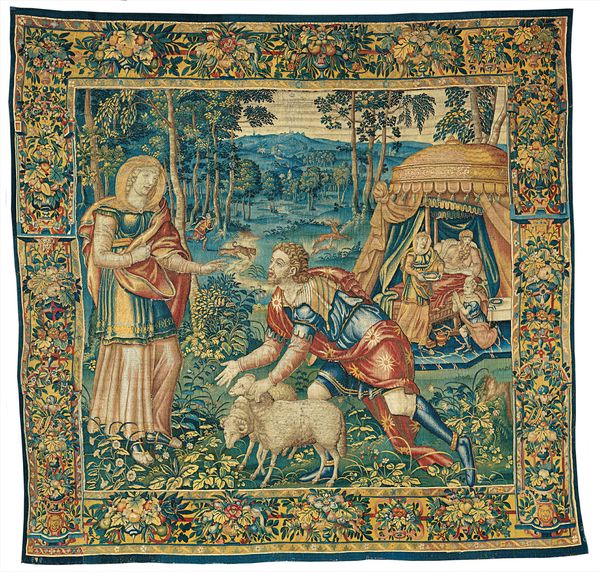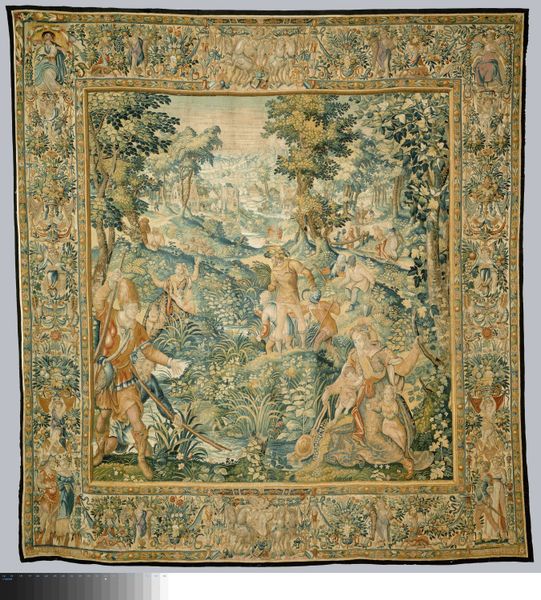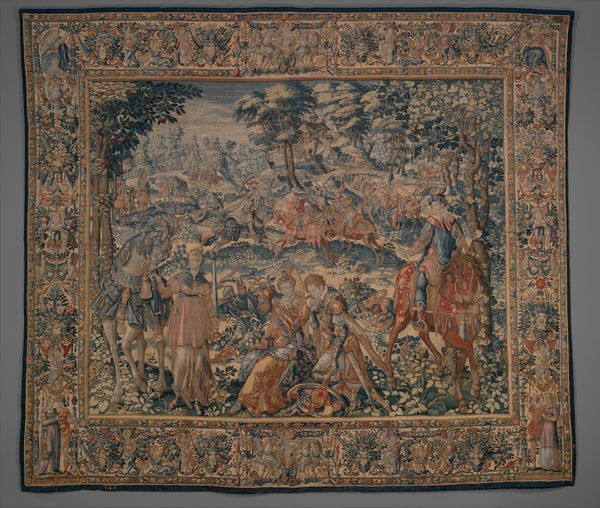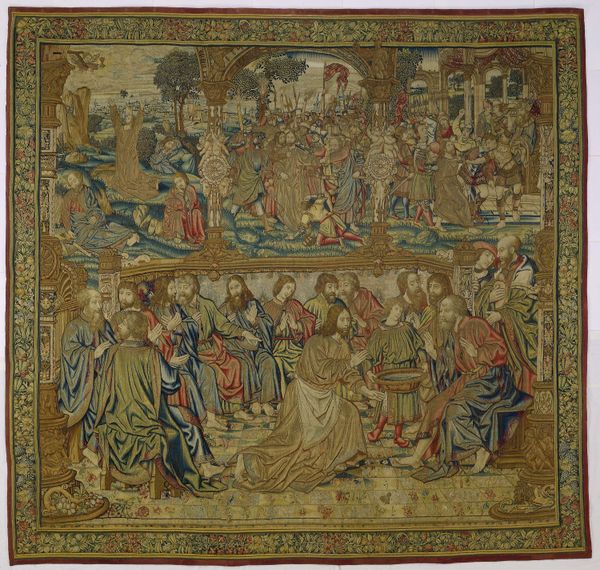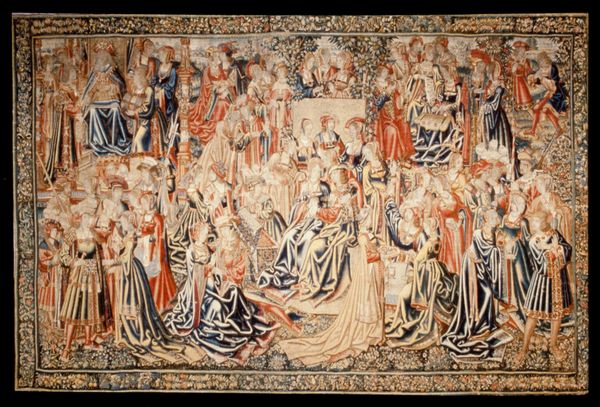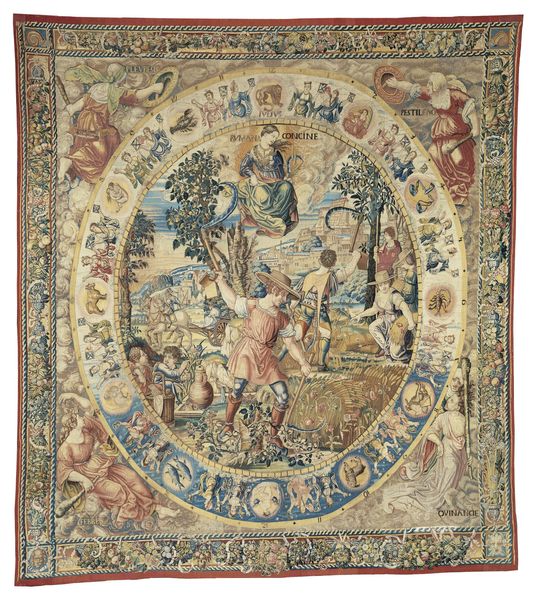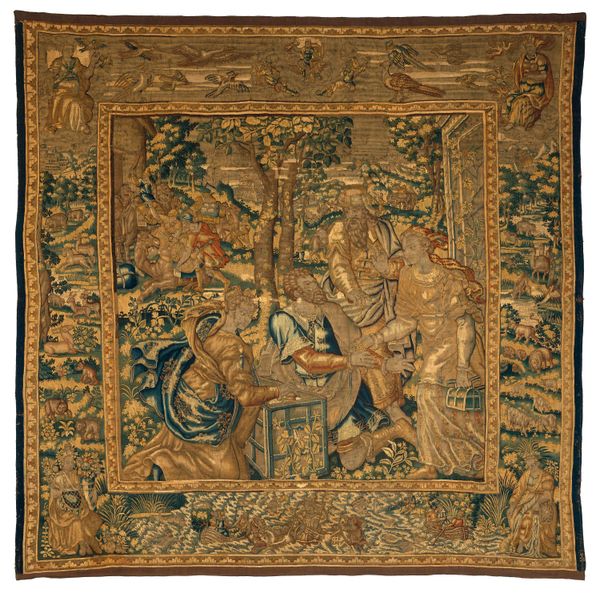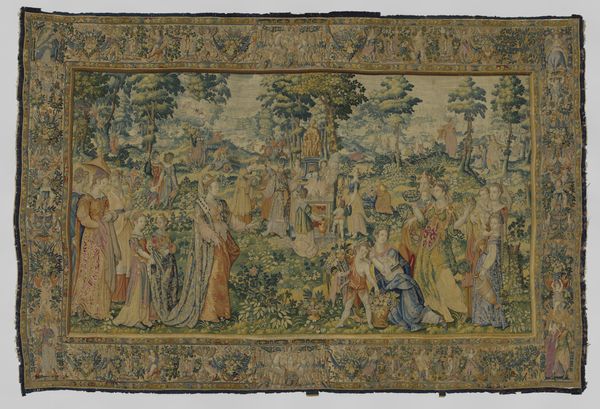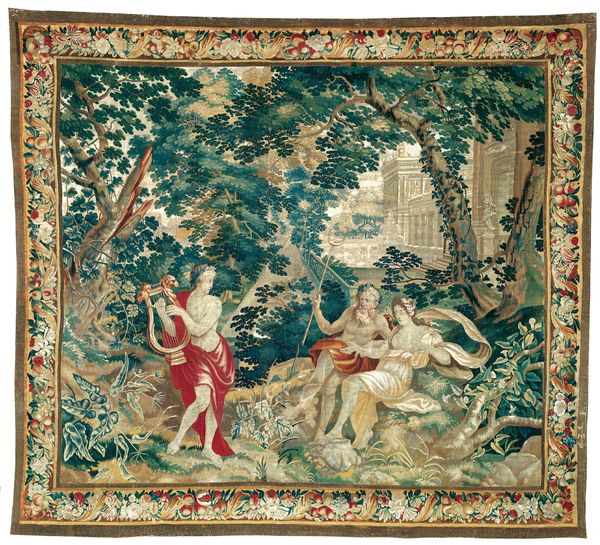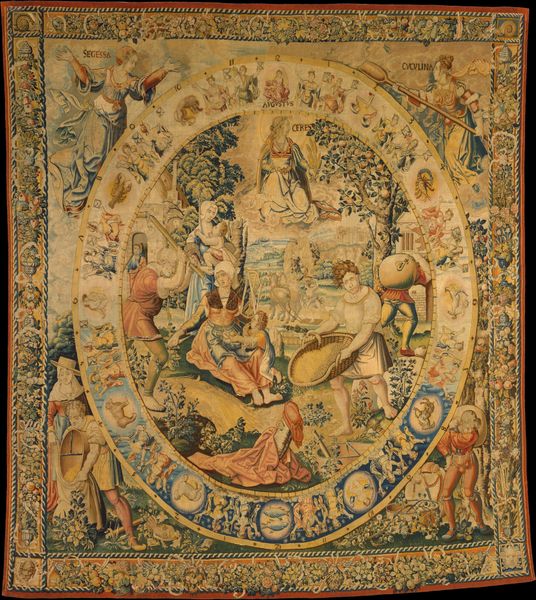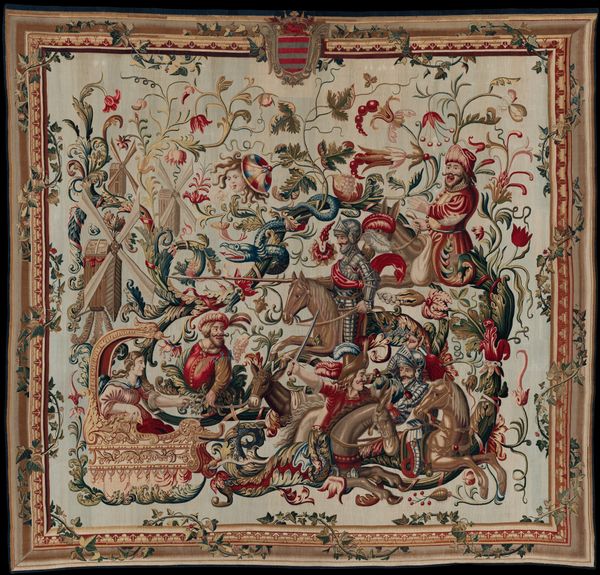
weaving, textile
#
narrative-art
#
weaving
#
textile
#
figuration
#
11_renaissance
#
history-painting
Dimensions: height 328 cm, width 338 cm
Copyright: Rijks Museum: Open Domain
This tapestry, depicting Tobit and Anna in exile, was woven in the Southern Netherlands, probably in the 17th century, by Frans Geubels. It's made with wool and silk threads, built up on a loom, a slow, painstaking process demanding exceptional skill. The material is everything here. Wool provides the structure and durability, while silk lends sheen and highlights, defining figures and architectural details. Look closely, and you’ll see the weavers’ technical virtuosity: the subtle color gradations, the fine lines that create the illusion of depth. Making a tapestry like this was a significant undertaking. Workshops were highly organized, involving designers, weavers, and dyers, all working together in a complex economic system. Tapestries like these were luxury goods, emblems of wealth and status, and they represent a significant investment of labor and resources. Considering the materials and making of an artwork like this reminds us that what we are really seeing is the result of a whole network of creative and economic relationships.
Comments
No comments
Be the first to comment and join the conversation on the ultimate creative platform.
